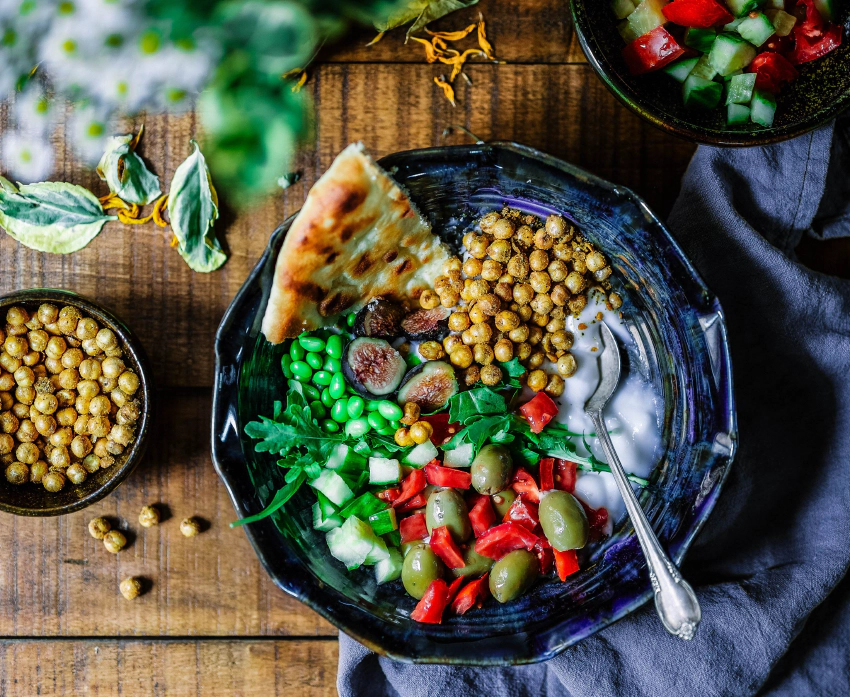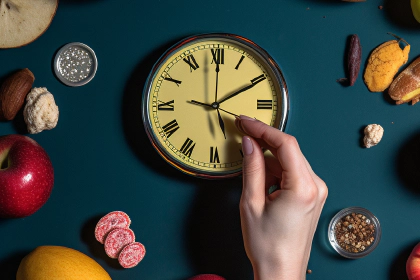
The Art of Savoring: Enhancing Your Dining Experience
We are often on-the-go and rushing to our next obligation or meeting. It’s easy to overlook the simple pleasure and benefit of truly savoring a meal. Often, we find ourselves rushing through meals, only to be left feeling unsatisfied and disconnected from the experience. Taking time to savor our meal is an essential component of mindful eating. The process invites us to slow down and fully immerse ourselves in the flavors, textures, and aromas of our food. By honing our ability to be present and savor each bite, we can transform our dining experiences into moments of genuine enjoyment, gratitude, and nourishment for both body and mind. We will share ideas and techniques of being present to help you build your mindful eating practice and cultivate a deeper connection with the food you eat.
The Science of Savoring
Taking our time with our meal and consciously engaging with the food allows the body’s natural neurological and physiological processes to proceed. As we eat, our brain releases neurotransmitters such as dopamine and serotonin, which are associated with feelings of pleasure, happiness, and well-being. These chemical messengers not only enhance our enjoyment of the meal but also help to reduce stress and anxiety, creating a positive feedback loop that encourages us to continue savoring our food. It just takes a little patience and presence of mind to allow the neurochemical cascade to begin.
Savoring your food also plays a vital role in promoting satisfaction and satiety. As we slow down and focus on the sensory experience of eating, our body has time to register that we are actually full. The hormones leptin and ghrelin, which regulate hunger and satiety, are given time to communicate with the brain, signaling when we’ve had enough to eat. By giving the hormones a chance to signal while we are eating we can feel satisfied and full, which can prevent overeating. Additionally, taking our time allows us to absorb nutrients more effectively. When we thoroughly chew our food, we break it down into smaller particles. Those smaller particles make it easier for our digestive system to extract and process the essential vitamins and minerals our body needs for optimal health.
Engaging the Senses
Savoring our food means to delight in the experience, which we can enhance by paying attention to all of our senses.
Taste: Focusing on flavors and textures
To fully engage with taste, try to identify the individual flavors and textures within each bite. Notice the sweetness, saltiness, sourness, bitterness, and umami present in your food. Pay attention to the contrast between crisp and soft textures, or the smoothness and creaminess of certain ingredients. Taking the time to differentiate and appreciate these elements can elevate the entire dining experience and deepen your connection to the meal.
Smell: Appreciating the aroma of food
Our sense of smell is closely linked to taste and memory, making it a crucial component of savoring. Inhale the aromas of your food before you take a bite, and try to pinpoint specific scents that emerge. Allow these fragrances to transport you to the memories and emotions associated with each aroma. By immersing yourself in this sensory experience, you can enhance your appreciation for the food and create a more meaningful connection to the meal.
Sight: Admiring the presentation and colors of dishes
The visual appeal of a dish can greatly influence our overall enjoyment. Take a moment to admire the presentation, arrangement, and colors of your food. Notice how the different ingredients and garnishes create a visually harmonious plate. Appreciating the artistry and care that goes into crafting a beautiful meal can further enrich your savoring experience and encourage a deeper connection to the food. We will explore mindful preparation of food and presentation in other articles, but if you preparing the meal this is your opportunity to take some time to plate the meal as part of the experience.
Touch: Experiencing the tactile sensations of food
The tactile sensations of food can also contribute to the art of savoring. Notice the temperature, weight, and texture of your utensils, glassware, and the food itself. The texture and consistency of the food itself also plays a part in the sense of touch. Do you notice any contrasting textures or sensations?
Sound: Tuning in to the sounds of the dining environment and food preparation
The sound of your dining environment can also enhance the experience. Tune in to the gentle clinking of utensils, the murmur of conversation, or the sizzle and crackle of cooking food. Maybe there is pleasant music playing in the background. Embrace these auditory elements as part of the overall sensory experience, and allow them to further immerse you in the present moment, deepening your connection to the meal and the dining experience as a whole.
Putting It Together
Now that we’ve covered various aspects of experiencing your food, let’s put it all together and discuss some practical tips to help you fully immerse yourself in the dining experience. By adopting these simple yet effective habits, you can create a more mindful and satisfying relationship with your meals, fostering a deeper appreciation for the food you consume.
Eating slowly and deliberately
Eating at a slower pace allows your taste buds to fully absorb the flavors and textures of each bite while giving your body time to register feelings of fullness. To eat more slowly, try putting down your utensils between bites, taking smaller portions, and consciously focusing on the sensations of each mouthful. Thoroughly chewing each bite will help slow the process down. As you practice this technique, you’ll find yourself enjoying your meals more fully.
Taking breaks between bites to fully appreciate each mouthful
Incorporating breaks between bites helps you fully appreciate the sensory experience of your meal. Use these pauses to take a deep breath, engage with your surroundings, or simply relish the flavors lingering on your palate. These brief moments of reflection allow you to be present and mindful during the dining process, ultimately enhancing your connection to the food and experience.
Practicing gratitude and appreciation for the food and dining experience
Cultivating a sense of gratitude and appreciation for your meal can significantly enrich your dining experience. Before you begin eating, take a moment to acknowledge the time, effort, and resources that went into producing your meal. Consider the farmers, cooks, and other individuals involved in the process, and express gratitude for their contributions. By fostering an attitude of appreciation, you can create a more meaningful connection with your food and elevate your overall dining experience.
Closing Thoughts
As we bring together the various aspects of enjoying your food, it’s important to remember that practicing mindfulness is a journey. Be patient with yourself. You don’t need to master every step all at once.

